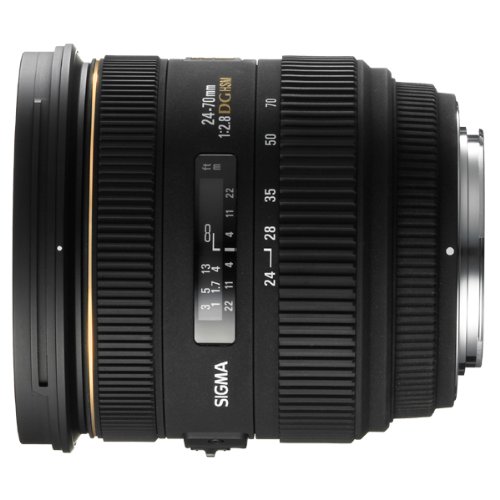
Attentive readers (hi, Mum), will perhaps recall that around this time last year, I tried out a Sigma 24-70mm f/2.8 IF EX DG HSM as a replacement for my able but unloved Canon 24-105 f/4 L.
The copy of the Sigma I received front-focussed badly, and since I had only the Canon 5D at the time as my main camera, I couldn’t use any micro-adjustments (even if that would have worked).
Sigma offered to calibrate the lens with that body, but I declined, as I wanted to it work on all the cameras I might potentially have, not just one. The lens went back.
With some regret, I must say, as I liked the feel and size of it (especially compared to the larger Canon 24-70 f/2.8 aka ‘the brick’), and liked some of the images I shot with it.
A year later, and I still had the 24-105mm largely gathering dust on the shelf, but now I also had a 5D Mk II to complement the older 5D. B & H had a (temporarily) good price on the Sigma ($799 instead of the usual $899 in the US), so I took the plunge again. And as this review shows, I’m glad I did.
This copy out of the box just worked. Sharp and fast, with none of the front focussing issues of the other copy. So why did I get it, when I’m normally such a proponent of prime lenses?
Studio-type work
Given my two-camera approach for paid sessions on location (a 35mm f/2 on one camera and and 85mm f/1.8 on the other), I wasn’t thinking of using this much on regular shoots.
But I might try it in place of the 35mm f/2, so I can go wider still – there’s a big difference between 24mm and 35mm (much more obvious than, say, the difference between 70mm and 81mm).
I can also see other professional uses for the lens, mainly in studio-type shooting. The times I have used the 24-105mm professionally have been school class photos (where I was shooting at f/8 and on a tripod), and the indoor portrait sessions, where I used off-camera flash. In other words, work in a controlled environment where the flexibility of the zoom was more important than narrow depth of field, and the lens was in its sweet spot as far as sharpness was concerned.
Soon after the Sigma arrived, I volunteered my time (with fellow photographers Minesh Bacrania, Charles Kiyanda and Henrik Sandin) to work on Santa Fe’s Help Portrait – we shot portraits for the growers, farm workers and vendors at the Santa Fe Farmers Market. We shot hundreds and hundreds of frames using the 24-70 in a studio-type setup with backfrops and off-camera flashes and it did really well.
Low-light walkaround
To me, wider aperture offered by the Sigma at f/2.8 was the single biggest reason for replacing the 24-105mm f/4 – to create the most useful walkaround lens when I’m only using one body. Unless I’m under the sort of circumstances described above, I live under f/4, partly for the narrow depth of field and partly for manageable shutter speeds indoors.
On a full-frame camera, the Sigma vignettes a little wide at f/2.8, but that’s easily correctable if you don’t like it, but otherwise it’s sharp, contrasty and fast to focus. I’ve not tested it myself, but from reviews the vignetting understandably isn’t such an issue on smaller sensor cameras.

If I’m carrying one camera around, and want it to be more flexible than the Olympus EPL-2 and Panasonic 20mm f/1.7 duo that’s almost always with me, then the 5dII with the Sigma 24-70mm is now my go-to choice.
Early (very early) on Christmas morning, that was the setup I grabbed to photograph Miss F opening her presents. I still adhere to the idea that if you’ve got 2 cameras to hand, a wide prime and a tighter prime offer the best combination for ultimate quality. But when you’re bleary-eyed and only want to have one camera around your neck, then this fast zoom really shines.
I could get the wide establishing shots, and the capture-the-details tighter images without any bother, all while blurring the background and keeping the shutter speed fast without jacking up the ISO too much.

Downsides
- While it’s lighter and shorter than the Canon 24-70 and has a lens hood you can turn round on the lens and still put the camera down, it’s still pretty chunky. To me, its size and weight are an advantage compared to its competitors, but it’s a lot more substantial than most primes.
- It’s not weather-sealed like the Canon L lenses, and it takes crazy wide 82mm filters, which you probably won’t have to hand from your other lenses.
- I got a good copy this time, but had a dodgy one before. For this much money, you’d like Sigma to get the quality control right, so there’s no messing. So I’d recommend buying it locally or from someone with good returns policy so you can check it out well.
Upsides
- Great image quality – sharp, with good contrast
- F/2.8 for good low light and narrow depth of field options
- Cheaper than the Canon alternatives
- Built like a tank (except for the weather sealing). So it will take a beating, just don’t take it out in a downpour or sandstorm.
Conclusion
I like this copy of the Sigma 24-70mm f/2.8 IF EX DG HSM . To the point where the Canon 24-105mm went off to eBay, and if you offered me the Canon EF 24-70mm f/2.8L USM
in its place, I don’t think I’d take it. Just make sure you get a good one.
3 replies on “Hell Freezes over – the return of the Sigma 24-70mm f/2.8 EX DG HSM”
[…] Jan 2012: I reviewed a different copy of the Sigma 24-70mm over here, and liked it much more. For balance, you should probably read that review […]
Nice review David. I have both the Canon 24-105L and the old Sigma 24-70 2.8 (non HSM). The main reason for this comment is to thank you in confirming something for me. When I went from film to 10D’s I had no problems but when I went to the 5D’s my Sigma didn’t focus correctly (nor did my Canon 50 1.2). Now with the 5DIII I have no issues with them. With that said I found you while looking for reviews on Sigma/Tamron/Canon 24-70 zooms. Thanks again for the review.
[…] economistIT professional and sometimes economistThe Sigma.I googled a bit first, ran across this:http://www.clearingthevision.com…For me, the speed would be important – I take a lot of indoor shots at night, without flash. I would […]